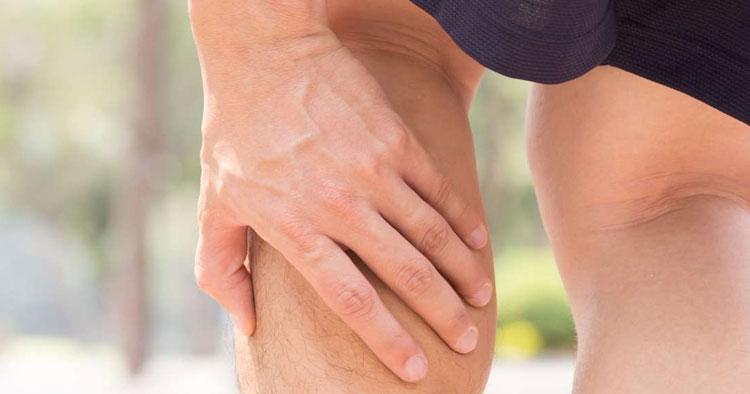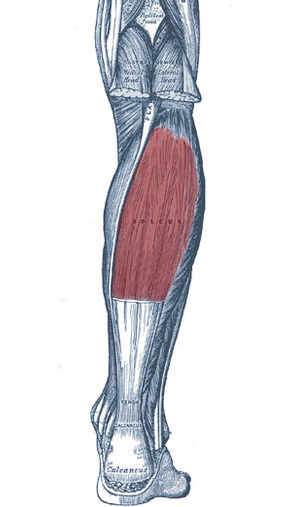Muscle Pain and Tendinopathy, Sports Injuries and Management
Muscle Of The Week: The Soleus Muscle
Soleus Muscle A Powerful Plantarflexor
Your Soleus muscle along with the gastronemius and plantaris muscles form the triceps surae, or what is commonly referred to as the calf muscle. The soleus is positioned in the superficial posterior compartment of the lower leg and on its own is a powerful plantarflexor of the ankle. When the action of soleus is combined with the additional power of the gastronemius and plantaris muscles this group of muscles enable us to jump, leap and run, and ultimately engage successfully in sports with explosive these pushing off actions.
Soleus Anatomy And Function
The soleus lies deep to the gastronemius and has its origin from the posterior aspect of the tibia and fibula, from these origins the muscle travels down the leg where it inserts on to the calcaneus (heel bone) via the achilles tendon. The action of the soleus muscle via its origins and insertion into the heel bone is to cause plantarflexion at the ankle (pointing of the foot). This action is necessary when pushing off the ground and propelling the body forward when walking, running, bounding…
The soleus can also work to reduce body sway when standing. Achieving this through stabilising the lower leg via contracting when standing with the foot held in a fixed position. By reversing the origin and insertion action of the muscle and rather than plantaflexing the ankle via the achilles tendon pulling on the heel bone, the heel bone now held in a fixed position standing it contracts pulling on the lower leg thus stabilising the body and lower leg position. Helping maintain posture and ultimately helping prevent the body from falling forward when standing.
Soleus Muscle Is Also Part Of The Skeletal-Muscle Pump System
Along with the other calf muscles your soleus muscle makes up a part of the skeletal-muscle pump system. A collection of muscles which assists the heart in circulating blood around the body. Veins situated within muscles of the skeletal-muscle pump system become compressed and decompressed as the muscles (such as the soleus) contract and relax. This action of compression and decompression of the veins aids in the return of blood to the heart helping circulation.
Calf Muscle Injury
Injury to the calf muscle is often the result of eccentric overloading to the calf, where the calf muscles are placed under stretching load while contracting. Injury site with many calf muscle strains is often around the muscle tendon junction with regard to the soleus this is where the soleus feeds into the achilles tendon. Following injury to the soleus muscle the individual will frequently feel pain when load is applied to the soleus and calf muscle in general, this load can include stretching actions of the calf muscles or achilles tendon, performing activities such as walking on tip-toes, local applied palpation pressure may also trigger pain. With a significant calf muscle strain there is often associated swelling and bruising as well as a painful limp.
Disclaimer: Sydney Physio Clinic does not endorse any treatments, procedures, products mentioned. This information is provided as an educational service and is not intended to serve as medical advice. Anyone seeking specific advice or assistance regarding Muscle Of The Week: The Soleus Muscle should consult his or her general practitioner, sports medicine specialist, personal trainer or physiotherapist.



